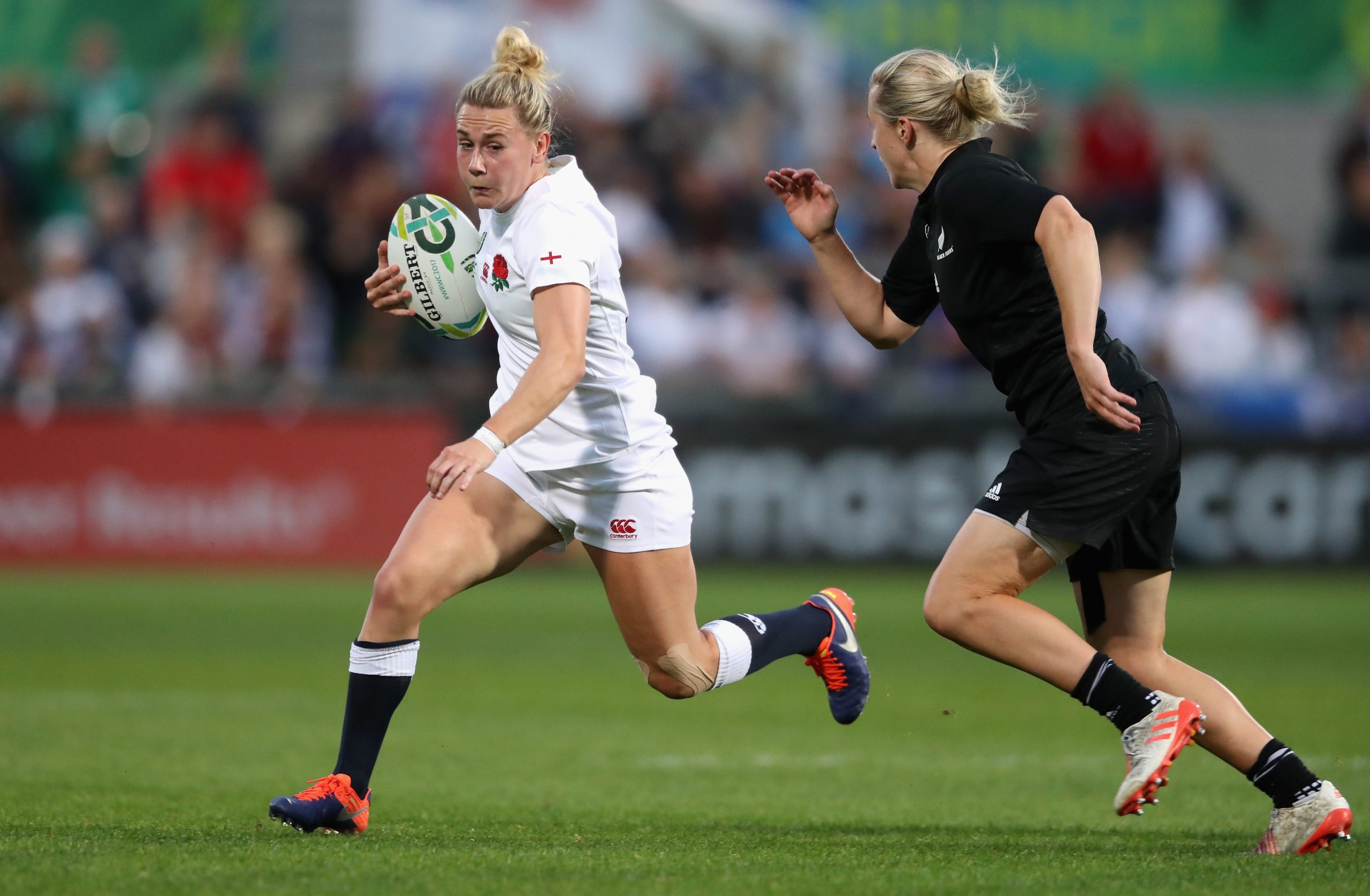
04 Nov A Look Into The Running Demands of Women’s International Rugby Union Players
Introduction
Rugby Union is a high intensity, intermittent, collision-based team sport, involving frequent bouts of High Speed Running interspersed with regular acceleration and deceleration efforts [1].
Despite its rise in popularity, little attention has been given to determining the demands of the Women’s game, especially at International Level, with only three published studies examining the activity profiles of female players during a 15-a-side rugby union game as a whole [2,3,4].
One study assessed the activity profile of a single Spanish International Match reporting a mean Total Distance of 5820m [2].
Another study examined a season of the Canadian Women’s League using time-motion video analysis [3], while the other looked at the match demands of Elite English Women’s Rugby Union [4].
However, there were limiting factors in all three studies mentioned above with the use of 5Hz GPS devices [2], limited number of players and games included [2,3], the use of male speed thresholds [4].
Therefore, the aim of this study was to determine the match demands of International Women’s Rugby Union and to report on positional differences should they exist.
Implementing into Daily Practice
Design
Participants
All participants (n=40) were part of an international squad in this present study.
Players were grouped as follows with the front row (FR), second row (SR) and back row (BR) positions making up the forwards and scrum half (SH), fly half (FH), centres (C) and back three (B3) positions making up the backs.
Data was obtained from players who had completed >60 minutes per game (n=7), across an international season.
Analysis
All matches took place between November 2018 and March 2019 where each player wore a GNSS unit (Apex Pod, STATSports, Newry, UK) in a bespoke pocket incorporated into their player jersey on the upper thoracic spine between the scapulae to reduce movement artefacts.
The GNSS units captured data at a sampling frequency of 10Hz.
Both 1st and 2nd Half drills were created using the Sonra Live App, with halftime periods excluded from the analysis, so that data only described on-field player activity including play stoppages.
All drills were synced across post-match and data was downloaded using STATSports’ Sonra Software.
Data was then exported to Microsoft Excel for further analysis.
Measures
Player’s movement speeds were classified into the following absolute categories: Running distance (> 3 m.s), High Speed Running (> 4.4 m. s), Number of Sprints (> 5.5 m.s-1), Accelerations (> 3 m.s 2) and Decelerations (> 3 m.s 2) along with Maximal Speed (m.s).
Results
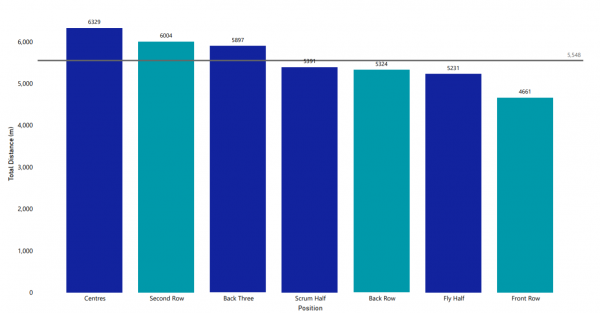
Figure 1 – Total distance covered (m) between specific positional groups.
The mean distance covered during match play 5548m, with the (C) covering the most overall distance, while the (FR) covered the least amount of distance throughout the duration of the match.
Total distance can be used to quantify workload in general, however further insight must be given to the intensity/speed this distance was covered at.
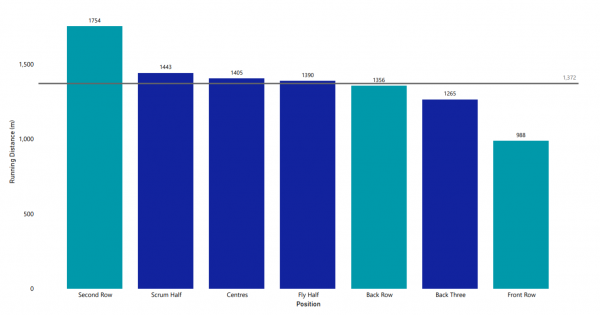
Figure 2 – Running distance covered (m) between specific positional groups.
On the contrary of this, players in the (SR) covered the greatest amount of Running Distance metres, with all but the (FR) covering in and around a similar overall meterage at this speed.
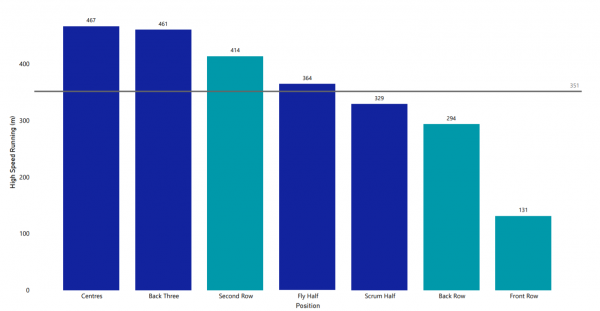
Figure 3 – High Speed Running distance covered (m) between specific positional groups.
(C) and the (B3) were the highest when it came to High Speed Running metres, with again the (FR) position covering significantly lower values at this intensity.
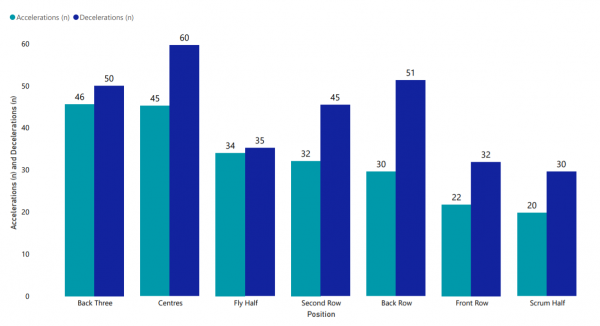
Figure 4 – Number of Accelerations & Decelerations completed between specific positional groups.
The (B3) and the (C) completed the greatest number of accelerations and decelerations throughout the game, with all positions completing more Decelerations overall.
Table 1 – Overview of movement patterns and player demands during match-play between specific positional groups.

Figure 5 – Maximal Speed values across specific positional groups.
Distance per minute is a metric used predominantly used to quantify intensity of work throughout the course of a game, with (FH) and (SH) displaying the highest values.
The (B3) displayed the highest Max Speed values in comparison to all other positions.
Limitations
The purpose of this study was to present data on International Women’s Rugby Union. Despite, the implementation of female specific speed bands/thresholds no such practice was used in relation to Acceleration/Deceleration Zones, which were the same zones for their male counterparts, resulting in a more than likely under-estimation of Acceleration/Deceleration activities across all playing positions.
Amending the Acceleration/Deceleration thresholds to suit the physical capabilities of females, will give a more accurate description of the game demands for Women across these two-particular metrics.
It is important to note that all data presented is in absolute values.
Due to the difference in positional demands, the use of relative values might be more applicable to use to get a true indication of an athlete’s ability or capacity especially, in the higher speed thresholds.
A common method used within the literature when using relative values, can be based off each individual’s Max Speed.
Practical Applications
This study presents the match demands in terms of movement characteristics and workloads performed at International Women’s Rugby Union.
The findings have application to performance staff and coaches with regards to the planning and preparation of training, while also giving them a better understanding of the different physiological demands required for each specific position.
This data will provide a reference point also for club coaches to allow the growth and development of their players and enabling them to be exposed and prepared to play at the highest level.
Author Details
Kate Keaney
Account Manager – Sports Scientist
References
- Delaney, J.A., Stewart, A., Thorton, H.R., and Dascombe, B. (2016) “Peak Running Intensity of International Rugby: Implications for training prescription”, International Journal of Sports Physiology and Performance.
- Suarez-Arrones, L., Blanco, F.P., Portillo, J. and Villarreal, E.S. (2014) “Match-Play Activity Profile in Elite Women’s Rugby Union Players”, The Journal of Strength and Conditioning Research.
- Virr, J.L., Game, A., Bell, G.J., and Syrotuik, D. (2014) “Physiological demands of women’s rugby union: time-motion analysis and heart rate response”, Journal of Sports Science.
- Bradley, E.J., Board, L., Hogg, B. and Archer, D.T. (2020) “Quantification of Movement Characteristics in Women’s English Premier Elite Domestic Rugby Union”, Journal of Human Kinetics.